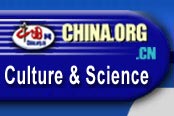On in Beijing now is a "863" Program Exhibition, scheduled February 26 - March 6, jointly held by the Ministry of Science and Technology and the General Armament Department of the Chinese People's Liberation Army. A national hi-tech exhibition, it showcases China's hi-tech successes achieved under the "863" Program initiated in March 1986 following four Chinese scientists' suggestion aiming at making breakthroughs in some sophisticated fields of science and technology to which late Deng Xiaoping had given his nod.
Fifteen years have gone by since four Chinese scientists including Wang Dayan, academician of the Chinese Academy of Sciences, had been with their "863 Program" demanding keeping in track world advanced technologies in bringing a springtime of China's hi-tech development. With the strong backing of central authorities and a concerted effort made throughout China, as is shown by the exhibition, "863" Program has fulfilled its targets as originally planned which have, in many areas, much narrowed the country's gap with other hi-tech powers.
On display at the exhibition are a great many of hi-tech achievements marking China's hi-tech advances in the fields of biology, bioengineering and medicine, communication, high-performance computer, automation, information platform, artificial eyeball and photoelectric materials, amongst others.
Sources say hi-tech successes, nearly 50 percent as shown at the exhibition, had started from scratch. Among many of these are 230 research projects involving six industrial areas. Most outstanding is the research on human gene conducted in 1998 which affects hearing impairment. Some years back, Professor Cao Yilin had the first mouse with human being's ear growing on back developed thanks to introduction of gene project and tissue engineering technology in China. The striking small mouse on display has aroused wide interest in the exhibition due to the fact that doctors will be enabled with it, as is expected, to restore human being's organs in the near future.
Intelligent robots as Blue Superman developed by Harbin Industry University for outdoors operation and robots for manufacturing on show also create a hit in the exhibition area as visitors are told the possibility to use robots instead of human beings in risky situations. Robots for soccer games from China Northeast University also bring people new fun for entertainment.
In the information technology sector, homegrown hi-performance DAWNING (Shuguang) computer series form an example to augur the prospect of commercialization of hi-tech products in China. With a peak floating speed of 403.2 billion times per second, Dawning (Shuguang) 3000 superserver has a designed storage capacity of up to 16.8 gigabits (GB) of data by its EMI memory and 3,630 gigabits by its magnetic disks. The product may be used for many a varied purpose as of computing, network, information, liquidation, settlement, billing, data, and E-commerce.
Tank farming and fish breeding, insect-resistant GM cotton and high-yield hybrid rice seeding also catch people's attention for their wide prospects to benefit the Chinese farmers on a nationwide scale.
So far, China has been bountifully rewarded and a cluster of world-level hi-tech achievements reaped for its "863" Program for it has had a total of 5.7 billion yuan of input made in advancing the country's hi-technology. Over 200 billion yuan of economic return has been gained. Many hi-technologies have been directly or indirectly used in helping China's economic construction, strengthening of national defense and social development. A large contingent of Sci-tech personnel have been brought forth and come to their name over 2,000 patents and 47,000 theses, realizing an accumulated output value up to 56 billion yuan and an indirect benefit worth of 200 billion yuan.
Furthermore, new technologies with commercial users targeted have been developed and these include a fairly good number that have been directly used in people's daily life. A great many have been used to a multitudinous purpose as HD POS, part of 863 Program developed in Shanghai and used in nearly 200 enterprises to help reform their traditional business mode and enhance their competitiveness in 21 provinces in China. Statistics show that the value of sales volume by all users in China topped over 20 billion yuan annually. In Shanghai alone, 36 items involving robot technology, gene development, network technology, etc. have been industrialized to take up a sales volume of over 2.6 billion yuan.
For the future operation of the "863" Program there are over 6,900 high-tech projects backed by state funds and a sum of 15 billion yuan (US$1.8 billion) to be further made in coming five years. According to Ma Songde, vice minister of Science and Technology, China will focus on independent development of hi-technologies on its own instead of tracing on customary prints of world advanced. Topping China's hi-tech development is seeking new developments by its information industry centering on information security. Microelectronics development will receive unprecedented support from the government. Hi-technologies will also be used in modernizing China's traditional industries such as agriculture and herbal medicines making. As a part of the effort, the Ministry of Science and Technology will further open most programs on the Internet and invite public bid to attract first-rate scientists to participate in programs blueprinting China's development.
(People's Daily 03/02/2001)
